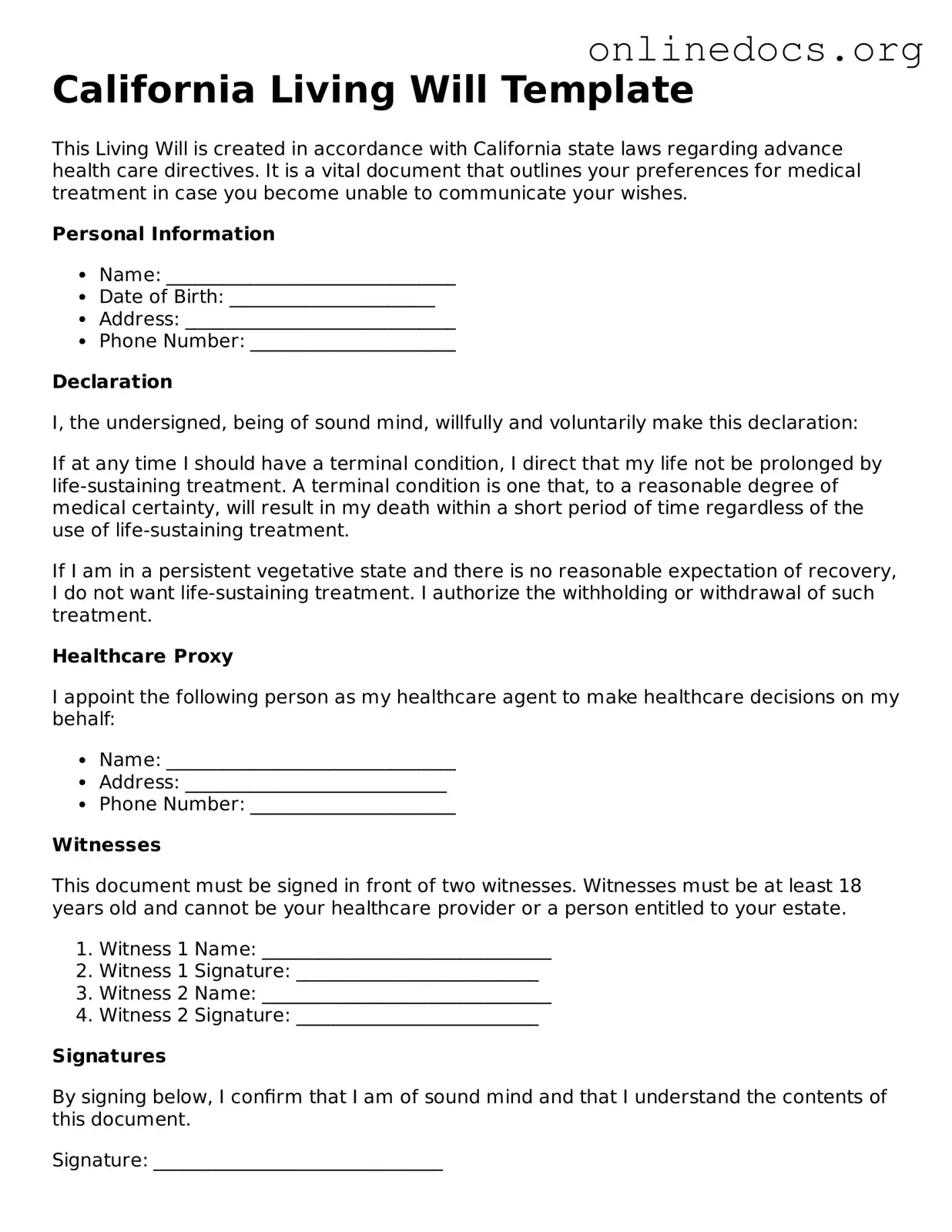The California Living Will form is similar to a Health Care Proxy. A Health Care Proxy allows individuals to appoint someone they trust to make medical decisions on their behalf if they become unable to communicate their wishes. This document emphasizes the importance of having a designated person who understands the individual's preferences regarding medical treatment, especially in critical situations. Both forms aim to ensure that a person's healthcare choices are respected, even when they cannot voice them directly.
Another document that shares similarities is the Durable Power of Attorney for Health Care. This document grants authority to a designated agent to make healthcare decisions for the individual. Like the Living Will, it can specify the types of medical treatments the individual would or would not want. Both documents are essential for ensuring that medical care aligns with the individual's values and preferences, especially during serious health crises.
The Do Not Resuscitate (DNR) order is another related document. A DNR order specifically instructs medical personnel not to perform CPR if a person’s heart stops or they stop breathing. While the Living Will covers a broader range of medical decisions, a DNR focuses on end-of-life care. Both documents reflect a person's wishes regarding life-sustaining treatment and help prevent unwanted medical interventions.
The Advance Directive is also similar to the Living Will. An Advance Directive combines both a Living Will and a Health Care Proxy into one document. It outlines an individual's healthcare preferences and appoints someone to make decisions on their behalf. This comprehensive approach ensures that all aspects of medical care are addressed, making it easier for healthcare providers and family members to understand and follow the individual's wishes.
The Physician Orders for Life-Sustaining Treatment (POLST) form is another important document. POLST is designed for individuals with serious health conditions and translates their treatment preferences into medical orders. While the Living Will expresses wishes in general terms, POLST provides specific instructions for healthcare providers. Both documents work to ensure that an individual's preferences are honored during critical medical situations.
The Mental Health Advance Directive is similar in that it allows individuals to outline their preferences for mental health treatment. This document can specify which treatments they want or do not want, similar to how a Living Will addresses physical health care. Both documents empower individuals to take control of their healthcare decisions and ensure that their choices are respected in times of crisis.
The Organ Donation Consent form also shares a connection with the Living Will. This document allows individuals to express their wishes regarding organ donation after death. While the Living Will focuses on medical treatment preferences during life, both documents reflect a person's values and wishes regarding their body and how it should be treated after they pass away.
The Declaration of Guardian for Minor Children is another relevant document. Although it pertains to guardianship rather than healthcare, it allows parents to designate a guardian for their children in case they become unable to care for them. Similar to the Living Will, this document ensures that an individual's wishes are respected regarding the care and upbringing of their loved ones in critical situations.
If you are looking to solidify your business framework, completing an insightful comprehensive Operating Agreement guide can be an essential step. This document not only delineates the roles and responsibilities of your LLC's members but also provides protection for personal assets, ensuring clarity in operational procedures.
Lastly, the End-of-Life Care Plan is similar as it outlines preferences for care during the final stages of life. This document can include specific wishes about pain management, hospice care, and other end-of-life considerations. Both the Living Will and the End-of-Life Care Plan aim to ensure that individuals receive care that aligns with their values and desires during their most vulnerable moments.
